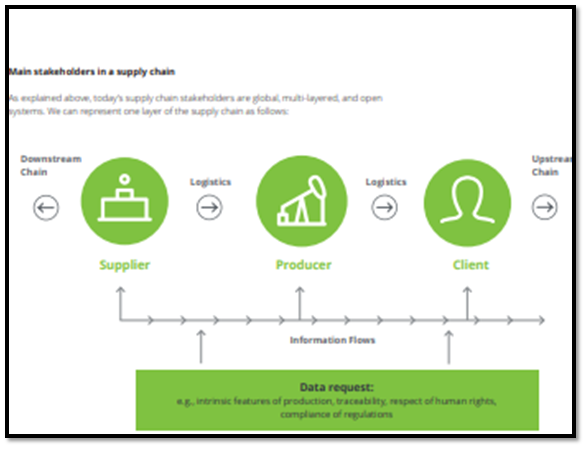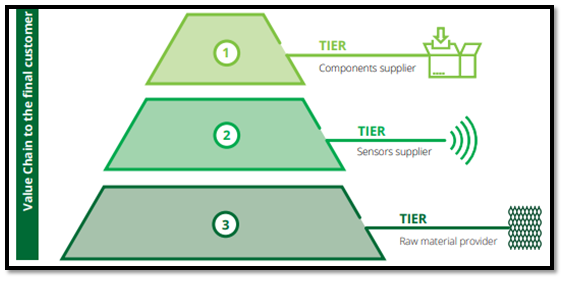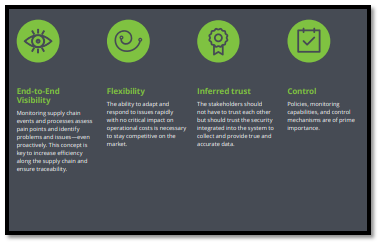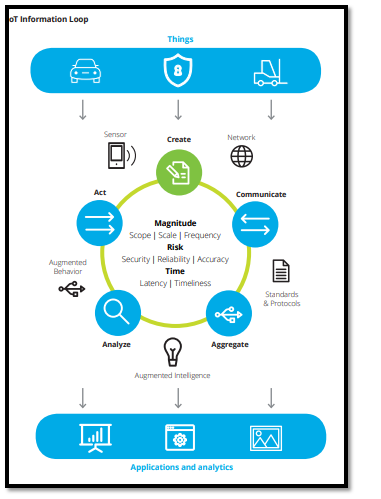Supply Chain Management Assignment: Impact of COVID-19 on Food Companies
Question
Task:
Supply Chain Management Assignment task details and instructions
“Businesses need to lead ‘transformational change’ in order to tackle the most urgent threats facing the planet and its people, including a radical overhaul of supply chains… We must work together, because the engine of global business – its supply chain – is broken, and requires transformational, cross-industry collaboration to fix it,” Grant F. Reid, CEO Mars Company.
Based on the above predictive statement before the advent of current pandemic situation, you are asked to choose a sector/industry (e.g., food, technology, healthcare, retail, services, automotive), and critically:
i. Discuss the supply chain visibility and agility, i.e., the ability of companies in the chosen sector/industry to build and manage more cost-effective, efficient, responsible and customer-focused supply chains given the disruption caused by COVID-19.
ii. Identify both internal and external COVID-19 risks for the companies in the sector/industry and discuss how the companies build supply chain resilience to quantify and rebalance those risks by emphasising cross-industry collaboration.
iii. Discuss how state-of-the-art technologies and/or new forms of supply chains (e.g., Additive Manufacturing, Big Data analytics, Internet of Things, Omnichannel, blockchain) help companies within the chosen sector to tackle those urgent supply chain threats and remain competitive during and after the pandemic.
Answer
Executive Summary
As seen in this supply chain management assignment, the social distancing, restrictions on national and international movements, the panic of spreading the disease have been implemented globally to reduce the spread of COVID-19. Since, the business work on global supply chain models, many of the food companies have suffered losses due to disruptions in national and international logistics and supply chains. The companies can undertake major steps for producing and redistributing products. One of the most cost-effective measures is the use of AI in the manufacturing units of food production due to which dependence on labour will decline. It is very important for companies involved in the distribution, packaging, and transportation of perishable and non- perishable products to have more clear visibility and transparency. It can be concluded that businesses need to implement digital technologies for mitigating future threats in the supply chain due to pandemics.
1.0 Introduction
Business enterprises are required to lead the transformational change for managing the threats that impact the supply chain that further creates a market gap and reduces the profit margins of the firm. In current scenarios, all the business units are struggling to sustain in the maintenance with reduced demands, limited supply, and reduced workforce in the pandemic. The social distancing, restrictions on national and international movements, the panic of spreading the disease has been implemented globally to reduce the spread of COVID-19. Also, food sectors have been majorly impacted as many countries are dependent on exports of food products which was disrupted (Laborde et al, 2020, p. 501). The supply chains were disrupted on a national and international level which also created short supply in many regions. The report will outline the visibility and agility of supply chains for managing the disruptions caused by COVID-19.
2.0 Issues in Supply chain due to COVID-19
Due to restrictions of movements during COVID- 19 pandemic many of the food companies have suffered losses due to short supply of labour, closure of restaurants, schools & colleges, movie halls, shifts demand due to income losses. The global supply chain has been severely disrupted as exporting and importing raw materials and finished food materials has also created a short supply. Unemployment has increased in many regions of the world which have impacted access to food by middle- and low-income earners. The emerging markets reduced their expenditure of importing food products from other nations which have also disrupted global food supply chains. In the US, consumer spending on food products had risen at 4% until 2020, until the series of lockdowns and social distancing disrupted the sales that were evenly spilled amongst the foodservice firms and retail outlets (de Paulo Farias and de Araújo, 2020. p. 362). Companies that are engaged in the production, conversion, and delivering the food face interrelated and uncertainties in the value chains. Due to the pandemics, excess stocks of food products could not be redirected due to a mismatch of demands and package size. There are very few chefs that have appropriate space for storing restaurant size canned products, however, the creation of customer-friendly formats consumes time and capital.
Globalization has fostered integrated supply chains that help companies to procure and distribute products and raw materials in different regions of the world. This has increased the dependence of the countries on international supply chain management which is also referred to as qualitative dimensions. International competition has prompted food sector companies to reap new possibilities in the optimization of production and supply chains (Paul&Chowdhury, 2020, p. 1). In this view, logistics have become the driving force of global supply chains through the food sector companies that can increase customer base, market capture, and brand awareness. In this view, COVID-19 has impacted the logistics as the suppliers, organizations and third parties involved in supply chains and logistics are facing issues of supply shortages, restricted movements in major COVID-19 regions. For instance, emerging markets like India had banned the export of major products like tea, apple, and other packaged products. Imports from different regions were also restricted as the country is hugely populated and normal operations will increase the spread of the viruses. All regions have similar circumstances that have disrupted the global supply chain and logistics. Also, in circumstances where series of lockdowns, shifting in demands in the food sector was noticed, as individuals started stocking up groceries, food &non- food products (Ernst & Young Global Limited, 2020a). This created discrepancy in demand and supply of products as the government stopped delivery, logistics, and all other operations that were not part of emergency services. Also, in many emerging markets, millions of individuals have lost their jobs which has also impacted the demand and operational fronts. Hence, the companies are required cost-effective and resilient system for predicting the market demands in advance and adopt alternative options for reducing the impacts of natural diesters and pandemics
3.0 Supply chain visibility and Agility in the Global Food Industry
The companies can undertake major steps for producing and redistributing products. One of the most cost-effective measures is the use of AI in the manufacturing units of food production due to which dependence on labour will decline. Also, organizations should equip advanced business analytics for producing products as customer demands. Big manufacturing companies could have analysed the changing market demands and produced and supplied food products in advance to reduce wastage and overproduction (Ernst & Young Global Limited, 2020a). Labour planning is one of the essential factors to manage supply chain disruptions. In many countries, factory work and distribution are managed by the immigrant workers thus due to COVID-19 restrictions, many of the upcountry workers flew back disrupting the distribution channels. Hence, in developed and developing nations labour planning helps in saving costs while also ensuring on-time delivery to the customers. The companies like Hershey's, Kraft Heinz can leverage automation and IoT solutions for manufacturing in a smart way thus mitigating high dependence on labor-intensive techniques. Manufacturing excellence that is enabled by digital technology will help in the standardization of per day routine work and aiding jobs which will help in relieving pressure on high reliance on managers for performing operations. Digital technologies and informed decisions will help in installing cost-effective and efficient systems (Deloitte, 2020a). Also, the alternative supply options will help the firms to be prepared for any disruptions in the supply chains in context with natural disasters and different types of pandemics in the food sector.

Figure 1:Major Stakeholders in Supply chain
(Source: Deloitte, 2020b)

Figure 2: Customer Demand
(Source: Deloitte, 2020b)
The companies should also focus on tier 1 supplier risk and illuminate the extended supply chain network. To adhere to the customer-focused strategy, it is important to modify production according to the changing requirements of customers. For, instance, the individuals stocking up grocery suppliers and demanded larger pack sizes as they are cost-effective and could be stored for months. Thus, the companies are required to update their inventory policies, planning parameters, and scheduling production agility in advance. It is very important for companies for conducting end-to-end supply chain risk assessments while prioritizing the customer focus areas(Accenture, 2020). The companies in the food sector should collaborate with the alternative suppliers for defining actionable short-term and outcome-driven resilience plans for breaking down activities in the supply chain ecosystem thus aiming to additional networks with various supplier's pool, production, and distribution networks. Leading companieslike Nestle, General Mills Inc. have built action plans based on current scenarios for limiting the impact of disasters thus, these firms introduced fact-based dashboards that aligned KPIs for creating enterprise and ecosystem visibility, thereby the plans were reprioritized. Also, the enterprises should plan map supply chain networks from the end- customers (Ernst & Young Global Limited, 2020b). Thus. The firms should be capable of establishing a methodology for measuring risk from each supply chain, factory, and warehouse.
4.0 Internal and External Risks for companies in the Food sector
It is very important for companies involved in the distribution, packaging, and transportation of perishable and non- perishable products to have more clear visibility and transparency. The restaurant and stores can anticipate their shipments through which they will be able to plan their delays and shortages. For instance, if Unilever closes its manufacturing units, it should duly inform related supply chains through digital communications which help the stores to search for alternative options while also minimizing the price inflation and final implications to the customers. Another issue related to COVID- 19 that individuals will choose cooking at home and will refrain from going into restaurants and malls. This will impact the foodservice industries as many grocery stores, departmental and food services are experiencing a huge shift in the business in recent times (Ernst & Young Global Limited, 2020b). The grocery and food selling companies are experiencing growth as individuals are purchasing larger packs for storage for following the lockdowns and other rules of COVID-19. The food manufacturing industries like Unilever, Con, Agra Foods are facing issues in adjusting their production levels to meet the demands while also avoid excess production for avoiding wastes, loss, and expenses. In this view, companies are required to implement time visibility in transactional activities and stock levels which help the planners at the production level for accurate forecasts thereby balancing the supply and demands (Ernst & Young Global Limited, 2020b). Thus, it will help the restaurants, stores, and food selling services to keep the stock in alignment with the demand thus improving supply chain flow while ensuring profitability for the participants. Public health is a top priority thus the participants need to ensure that social distancing, disinfecting, and other rules should be followed and communicated to consumers as well as to other participants. Building confidence in food supply and logistics systems will help in undertaking health and safety measures for inhibiting regular supplies to the bottleneck and areas.
Due to rapid threats posed by Coronavirus pandemics, the investors and business communities have been largely impacted due. The disruption in the global supply chain has posed serious risks and significant revenue loss has impacted the businesses and economies as well. Also, the internal risks include low operations, low productivity, and high cost by maintaining hygiene and rules of a pandemic. Companies like Unilever operate in many regions and produced a variety of food and non- food products. Due to the pandemic, the company operations in India and some regions are majorly impacted as labour intensive techniques are followed while the factories are situated in distant towns which pose challenges for workers to travel from their residents (Deloitte, 2020a). Since many of the regions of the world have been imposing a series of lockdowns, companies are facing a shortage of labour and drastic shifts in demand. The high cost of operations, reduced demands are some of the internal risks while weak supply and distribution channels.
The companies can rebalance the risks through IoT capabilities for fostering digital ecosystems that are connected systems thus providing users relevant and most updated information for making an appropriate informed decision to mitigate internal and external risks. Also, Automated manufacturing capabilities will help firms in running the production units with interchangeable personnel which will also reduce labour requirements of the firms (Henry, 2020, p.1091). The companies in the food sector should transform procurement into value generation functionalities through timely reviews while adjusting categoric strategic priorities in variables like cost, quality, delivery, innovation for driving resiliency. Implementation in supplier social networks in the sourcing functions, thus lifecycle management of suppliers will be strengthened. The sourcing capabilities andefficient supplier collaboration will help in coping with challenging situations. One of the external risks in incorporating digital technology is attacks by cybercriminals’ in areas that are majorly impacted by COVID-19. Companies need to develop crisis management annexures for dealing with potential human impacts.
In responding with COVID-19, the technological sector has evolved as the majority of operations are being conducted through online mediums irrespective of the size, locations of many foods sector companies. Data centres have been successfully used for protecting the staff in COVID-19. Since, technology is increasingly used in various industries like education, healthcare, thus food sectors can collaborate with technological firms for planning, distribution, and managing the operations of firms. Technological innovations will help efficient operations while also manage critical situations like pandemics. Also, the companies should collaborate with e-commerce sectors for online shopping of essential food products and commodities (Ernst & Young Global Limited, 2020a). The collaboration with online firms will help the food sector companies to access the external delivery options through which distribution can be done (Klemeš et al, 2020, p. 2). In this view, the companies engaged in food processing units by procuring farm products and transforming into finished or semi-finished products. Collaborating with technological industries in many emerging markets will farm operators to effectively distribute their products to direct customers as well as to the firms. In many emerging markets the governments introducing online markets that help farm operators to reach final consumers that will also reduce corruption and middlemen commissions. Big and small, all food sector companies should start selling their products through digital platforms which help to build strong and resilient supply chains. 5.0 Use of Collaborative Technologies in Supply Chain Threats Post- COVID-19 The visibility strategies that are outlined in the above sections have to be implemented for improving the operational management and databases that are prevalent in global supply chains. The disruption that has been in place due to COVID-19 can be corrected through the digital transformation that will help in creating nimble and cohesive supply chains in the food industry. forinstance,blockchain technologies help in decentralization thus distributing ledger for publishing and sharing information in real-time. Blockchain technologies are an efficient mechanism in building resilient supply chains as it provides accurate and end- to- end tracking features (Caro, 2018, p.1). Thus, the companies in the food sectors are required to digitize the physical assets thus creating a decentralized system that will contain a record of all possible transactions thus tracking assets that are employed in production to delivery to the end-users. In this view, Walmart has collaborated with IBM for implementing block-chain technology for digitizing its food supply chain from different manufactures.

Figure 3: Benefits of IoTArchitectures
(Source: Deloitte, 2020b)
The IoT architecture is defined as the creation, communication, aggregation, analysis, and acting. In aspects of creation, sensors are attached in different production and supply processes for creating the information and triggering the flow of information. In the above scenarios, layers undertake automated instructions for executing an action. In the communicating aspect, networking equipment is used for communicating information from the sensors and connecting the same with the internet(Accenture, 2020). In the aggregation aspects, data collected from sensors are integrated with external information thus managing the sensors and network elements. In the analysis aspect, raw data from the downstream is evaluated and actionable insights are derived. In the action aspect, the data analysed from IoTarchitecture triggers changes in manufacturing plants with human interference(Ernst & Young Global Limited, 2020b).
Artificial intelligence helps in leveraging real-time information for guiding best actions even in unexpected scenarios and threats. It can be said that digital solutions will help several food companies to align all the stakeholders efficiently in the supply chain and logistics for removing the obstacles in the journey from the warehouse to final customers(Deloitte, 2020b).

Figure 4:IoT Information Loop
(Source: Deloitte, 2020b)
The art- of- technology brings high agility within the food company along with the other business partners. The use of IoT devices is created for sensing the demands, tracking good movements, forecasting solutions while also monitoring the social media demand behavior will help the managers in gaining insights about the changing demand. The advanced forecasting capabilities will help the managers in planning ahead and thus coping with pandemics and natural disasters without much impact on the business. The food companies will work on efficient supply chain models in normal business days and inhibit strong resilient systems in pandemics and other adverse circumstances.
Using Big data, IoT and other aspects of technology architecture will be helping building trust amongst each stakeholder, as participants will share real-time information. The information flow is limited manifested and can collect accurate and effective real- time for monitoring the supply chains and tracking them. This will help the food sector companies to combat threats and risks like COVID-19(Deloitte, 2020b). The AI and IoTinfrastructure are highly capable of tracking each activity of the food supply chain that starts from procuring products to selling finished products to the customers thus reliability of these systems are high which will help in earning stable revenues even in distress situations like today (that is the phase of pandemics).
6.0 Conclusion
In recent business scenarios, globalization has played major roles in building a dynamic supply chain on a global basis. However, the pandemic has disrupted the global supply chain framework due to which many workers have lost their jobs, food businesses have suffered due to high shifting consumer demands and lack of supply opportunities. The pandemic has created several restrictions like social distancing, series of lockdowns, and other precautionary measures due to which the food companies are unable to supply required supplies to the markets. The companies are required to build resilient systems for mitigating impacts in the future arising from pandemics and other adverse scenarios. IoT and AI will be appropriate for forecasting appropriate business situations and undertaking decisions accordingly.
?
7.0 Reference List
Accenture, 2020.State of supply chains. [online] Available at:
Caro, M.P., Ali, M.S., Vecchio, M., and Giaffreda, R., 2018, May. Blockchain-based traceability in Agri-Food supply chain management: A practical implementation. In 2018 IoT Vertical and Topical Summit on Agriculture-Tuscany (IOT Tuscany) (pp. 1-4). IEEE.
de Paulo Farias, D., and de Araújo, F.F., 2020. Will COVID-19 affect food supply in distribution centers of Brazilian regions affected by the pandemic?. Trends in Food Science & Technology, 103, pp.361-366.
Deloitte, 2020a.COVID-19 Managing supply chain risk and disruption. [online] Available at: Ernst & Young Global Limited, 2020a.COVID-19: how to build supply chains resilient to disruption. [online] Available at: Ernst & Young Global Limited, 2020b.COVID-19 and pandemic planning: How companies should respond. [online] Available at: Glauber, J., Laborde, D., Martin, W., and Vos, R., 2020. COVID-19: Trade restrictions are the worst possible response to safeguard food security. Issue Post, March, 27, p.2020.
Henry, R., 2020. Innovations in Agriculture and Food Supply in Response to the COVID-19 Pandemic. Supply chain management assignmentMolecular Plant, 13(8), pp.1095-1097. Howells, R., 2018. Four Supply Chain Strategies to Drive Digital Transformation.[online] DigitalistMagazine Available at: Klemeš, J.J., Van Fan, Y. and Jiang, P., 2020. The energy and environmental footprints of COVID-19 fighting measures–PPE, disinfection, supply chains. Energy, 211, p.118701. Laborde, D., Martin, W., Swinnen, J., and Vos, R., 2020. COVID-19 risks to global food security. Science, 369(6503), pp.500-502.
Li, Z., Liu, G., Liu, L., Lai, X. and Xu, G., 2017.IoT-based tracking and tracing platform for the prepackaged food supply chain. Industrial Management & Data Systems. Pal, A., and Kant, K., 2018.IoT-based sensing and communications infrastructure for the fresh food supply chain. Computer, 51(2), pp.76-80. Paul, S.K., and Chowdhury, P., 2020. A production recovery plan in manufacturing supply chains for a high-demand item during COVID-19.International Journal of Physical Distribution & Logistics Management.
Tsang, Y.P., Choy, K.L., Wu, C.H., Ho, G.T.S. and Lam, H.Y., 2019. Blockchain-driven IoT for food traceability with an integrated consensus mechanism. IEEE Access, 7, pp.129000-129017. Zhang, Y., Zhao, L., and Qian, C., 2017. Modeling of an IoT-enabled supply chain for perishable food with two-echelon supply hubs. Industrial Management & Data Systems.












